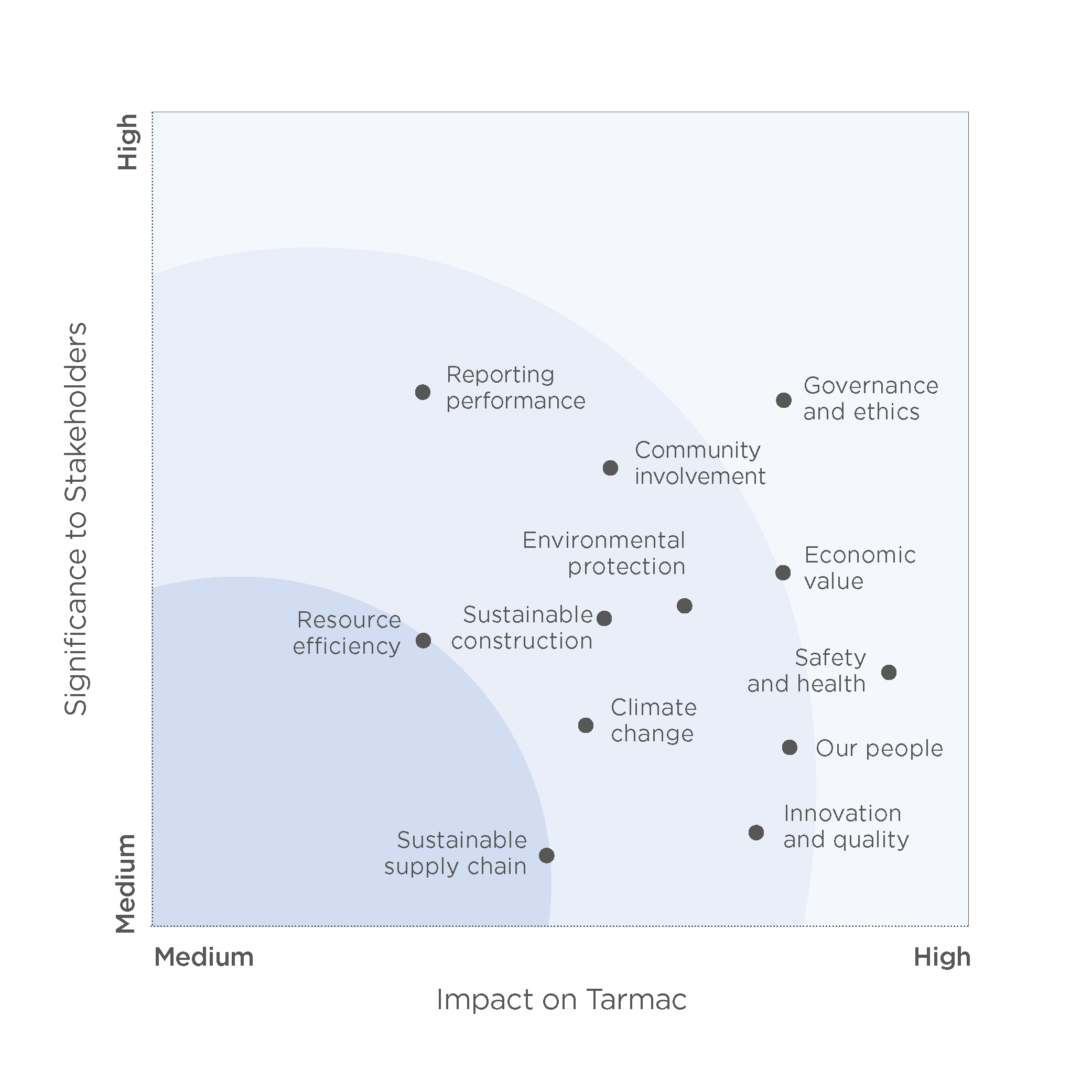our sustainability strategy
In doing so, as well as the many positive impacts of our business, we also have to consider the potential negative aspects. This requires us to understand how the goods we buy are produced by our suppliers, how our operations do business, how our raw materials and products are transported, how our products are used in the construction process, how they perform in use and what happens to them when they are no longer required. Only by adopting this whole life-cycle approach can we continually improve sustainability, continually rethink our business, products and services, and develop innovative ideas that allow our customers to create more sustainable buildings and infrastructure.
To do this we have developed a sustainability strategy based around four strategic themes: People, Planet, Performance and Solutions. Against each of these themes we have identified key priority areas of focus, confirmed our commitment and set some ambitious milestone targets in addition to other more detailed performance targets.
Our Executive Committee is responsible for the setting and delivery of our sustainability strategy. We regularly measure, review and report progress in a clear and transparent way and work with our External Sustainability Panel which acts as a ‘critical friend’ to challenge and monitor our actions and decisions.
Read more - Message from External Sustainability Panel
In 2017 we have undertaken a fundamental review of our strategy and approach with our Executive Committee to take account of the progress we have already made and new challenges we have ahead. Our new approach builds on our achievements to date and sets out our long term sustainability commitments and sets ambitious targets to 2020. Sustainability is aligned and embedded into our new business strategy and culture which we call ‘The Tarmac Way’ and is integral to achieving our purpose of ‘Building our Future’. The new sustainability strategy will be published in early 2018 and will be used as the foundation of future reporting.
Our key priorities have been identified through a materiality analysis aligned with the Global Reporting Initiative’s G4 Sustainability Reporting Guidelines. This has helped us to identify and report on the most relevant sustainability issues for our business, our customers and our many stakeholders.
After gathering input from key decision-makers in the business, external experts, customers and other industry stakeholders, we mapped out each issue on a materiality matrix to highlight its significance. The key priorities identified by this process form the basis of our sustainability strategy.

